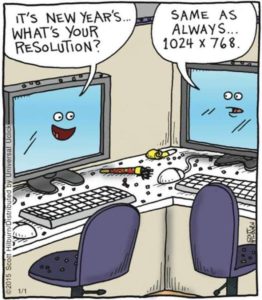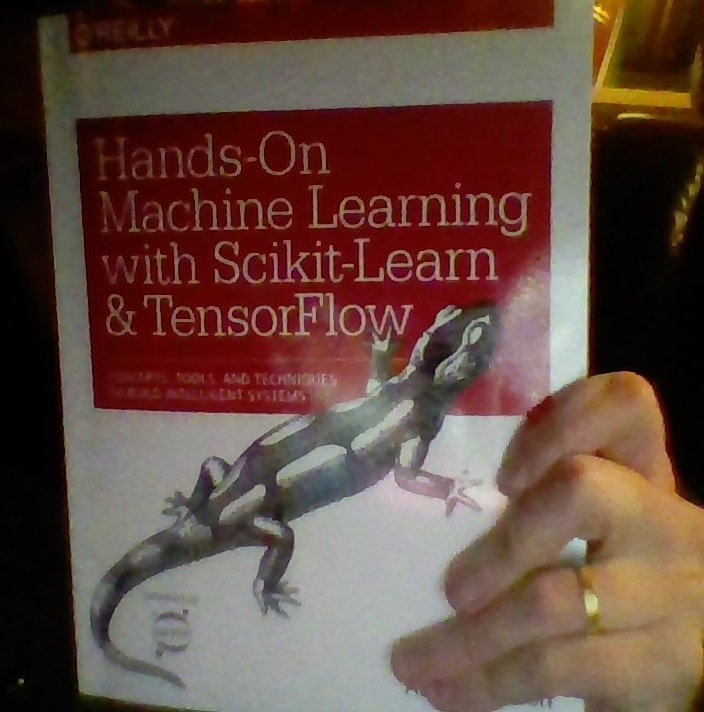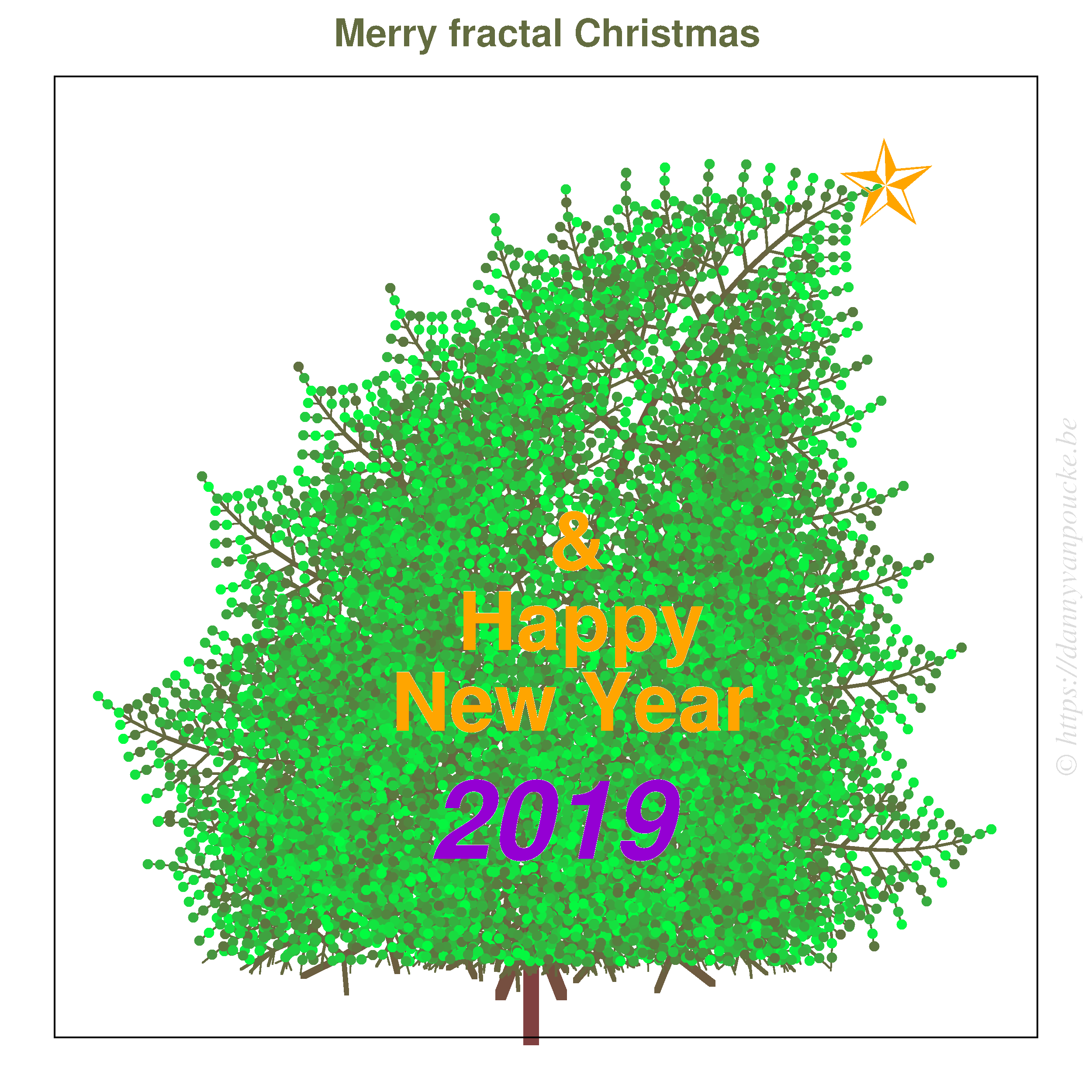Most commented posts
- Phonons: shake those atoms — 3 comments
- Start to Fortran — 1 comment

May 23 2019
Yesterday, it was the annual meeting of the Belgian Physical Society, a nice event where Belgian physicists come together to present their latest work. It also provides a good opportunity for junior scientist to present their work (e.g. through the young speaker contest, an event I won in 2011).
The three students competing for the young speaker award presented three very interesting topics going from the creation of Aharonov-Bohm cages over the observation of high energy cosmic rays with detectors of several thousand square kilometers to the temperature determination of clusters. This years young speaker award went very deservedly to Daniela Mockler for her work on the measurement of cosmic rays.
Before lunch there was the usual conference picture (can you spot me? 😎 )

After our lunch there was the poster session. This year, I decided only to present a poster of my work on vibrational spectra. It combined work on Eu defects in diamond, the vibrational spectrum of Lactose and water and a method for fingerprinting defects in diamond.
During the parallel sessions, I attended the parallel session on physics education. Domien Van der Elst highlighted the daunting task of dealing with a serious shortage in Physics and Mathematics teachers. He suggest the creation of an online platform to (replace/)supplement physics teachers. Despite the possible benefits (and the fact that some big companies are looking into similar setups) I remain skeptical. My main worry being GDPR (privacy) wise and the growing trend that software users are more and more considered as sources providing data and private information to mine and use for a companies benefit (not the software user). The second talk by Bart Huyskens was very inspiring. From his practical experience as a high school teacher, he develops, together with a colleague, hardware, software and courseware for STEM projects. And when he says STEM projects he means it: projects containing ALL parts of a STEM education. Hearing him talk, it is not hard to start dreaming up possible projects, both short and long term. The third and final presentation of the session was by Phillipe Leonard on the concept of “Challenge Labs“. During these labs, teams of students get a “simple problem” to solve. However, while trying to solve the the problem, they discover nothing is what it seems, and they need to learn to think outside the box. This definitely is an interesting method of teaching (assuming good support by the teacher involved) which has the possibility to lift students to a higher level.
After the coffee break, I attended the remainder of the condensed matter session. During this session Michael Sluydts presented his Machine-Learning work on dopants in Si and Ge. An approach which should be very suitable for diamond as well.
All in all a very interesting day.
Apr 01 2019
A bit over 1 month ago, I told you about my adventure at the film studio of “de Universiteit Van Vlaanderen“. Today is the day the movie is officially released. You can find it at the website of de Universiteit Van Vlaanderen: Video. The video is in Dutch as this is a science-communication platform aimed at the local population, presenting the expertise available at our local universities.
In addition to this video, I was asked by Knack magazine to write a piece on the topic presented. As computational research is my central business I wrote a piece on the subject introducing the general public to the topic. The piece can be read here (in Dutch).
And of course, before I forget, this weekend there was also the half-yearly daylight saving exercise with our clocks.[and in Dutch]
Mar 18 2019
Last week the 24th edition of the Hasselt diamond workshop took place (this year chaired by Christoph Becher). It’s already the fourth time, since 2016, I have attended this conference, and each year it is a joy to meet up with the familiar faces of the diamond research field. The program was packed, as usual. And this year the NV-center was again predominantly present as the all-purpose quantum defect in diamond. I keep being amazed at how much it is used (although it has a rather low efficiency) and also about how many open question remain with regard to its incorporation during growth. With a little luck, you may read more about this in the future, as it is one of a few dozen ideas and questions I want to investigate.
A very interesting talk was given by Yamaguchi Takahide, who is combining hexagonal-BN and H-terminated diamond for high performance electronic devices. In such a device the h-BN leads to the formation of a 2D hole-gas at the interface (i.e., surface transfer doping), making it interesting for low dimensional applications. (And it of course hints at the opportunities available with other 2D materials.) The most interesting fact, as well as the most mind-boggling to my opinion, was the fact that there was no clear picture of the atomic structure of the interface. But that is probably just me. For experiments, nature tends to make sure everything is alright, while we lowly computational materials artificers need to know where each and every atom belongs. I’ll have to make some time to find out.
A second extremely interesting presentation was given by Anke Krueger (who will be the chair of the 25th edition of SBDD next year), showing of her groups skill at creating fluorine terminated diamond…without getting themselves killed. The surface termination of diamond with fluorine comes with many different hazards, going from mere poisoning, to fire and explosions. The take-home message: “kids don’t try this at home”. Despite all this risky business, a surface coverage of up to 85% was achieved, providing a new surface termination for diamond, with a much stronger trapping of negative charges near the surface, ideal for forming negatively charged NV centers.
On the last day, Rozita Rouzbahani presented our collaboration on the growth of B doped diamond. She studied the impact of growth conditions on the B concentration and growth speed of B doped diamond surfaces. My computational results corroborate her results and presents the atomic scale mechanism resulting in an increased doping concentration upon increased growth speed. I am looking forward to the submission of this nice piece of research.
And now, we wait another year for the next edition of SBDD, the celebratory 25th edition with a focus on diamond surfaces.
Feb 20 2019
 Yesterday, I had the pleasure of giving a lecture for the Universiteit van Vlaanderen, a science communication platform where Flemish academics are asked to answer “a question related to their research“. This question is aimed to be highly clickable and very much simplified. The lecture on the other hand is aimed at a general lay public.
Yesterday, I had the pleasure of giving a lecture for the Universiteit van Vlaanderen, a science communication platform where Flemish academics are asked to answer “a question related to their research“. This question is aimed to be highly clickable and very much simplified. The lecture on the other hand is aimed at a general lay public.
I build my lecture around the topic of materials simulations at the atomic scale. This task ended up being rather challenging, as my computational research has very little direct overlap with the everyday life of the average person. I deal with supercomputers (which these days tend to be bench-marked in terms of smartphone power) and the quantum mechanical simulation of materials at the atomic scale, two other topics which may ring a bell…but only as abstract topics people may have heard of.
Therefor, I crafted a story taking people on a fast ride down the rabbit hole of my work. Starting from the almost divine power of the computational materials scientist over his theoretical sample, over the reality of nano-scale materials in our day-to-day lives, past the relative size of atoms and through the game nature of simulations and the salvation of computational research by grace of Moore’s Law…to the conclusion that in 25 years, we may be designing the next generation of CPU materials on our smartphone instead of a TIER-1 supercomputer. …did I say we went down the rabbit hole?
The television experience itself was very exhilarating for me. Although my actual lecture took only 15 minutes, the entire event took almost a full day. Starting with preparations and a trial run in the afternoon (for me and my 4 colleagues) followed by make-up (to make me look pretty on television 🙂 … or just to reduce my reflectance). In the evening we had a group diner meeting the people who would be in charge of the technical aspects and entertainment of the public. And then it was 19h30. Tensions started to grow. The public entered the studio, and the show was ready to start. Before each lecture, there was a short interview to test sound and light, and introduce us to the public. As the middle presenter, I had the comfortable position not to be the first, so I could get an idea of how things went for my colleagues, and not to be the last, which can really be destructive on your nerves.

Full periodic table, with all elements presented with their relative size (if known) created for the Universiteit van Vlaanderen lecture.
Feb 06 2019
Today VLIR (Flemish Inter-university Council) and the Young Academy had a conference on the future of fundamental research in Flanders: Roots of Science. We live in a world where we rely on science more and more to resolve our problems (think climate change, disease control, energy generation, …). In our bizarre world of alternative facts and fake news, science can be utterly ignored in one sentence and proposed as a magical solution in the next.
Although I am happy with the faith some have in the possibilities of science, it is important to remember that it is not magic. This has a very important consequence:
Things do not happen simply because you want them to happen.
Many important breakthroughs in science are what one would call serendipity (e.g., the discovery of penicillin by Fleming, development of the WWW as a side-effect of researchers wanting to share their data
at CERN in 1991,…) . In Flanders the Royal Flemish Academy and the Young Academy have written a Standpoint (an evidence-based advisory text)
discussing the need for more researcher-driven research in contrast to agenda-driven research, as they believe this is a conditio sine qua non for a healthy scientific future.
Where government-driven research focuses on resolving questions from society, researcher-driven research allows the researcher to follow his or her personal interest. This not with the primal aim of having short-te
rm return of investment, but with the aim of providing the fundamental knowledge and expertise which some day may be needed for the former. In researcher-driver research, the journey is the goal as this is where scientific progress is made by finding solutions for problems not imagined before.
Do we have to pay for this with our tax-payers money? I think we do. No-one imagined optical drives (CD, DVD, blue-ray) to become a billion euro industry while the laser was being developed in a lab. Who would have thought the transistor would play such an important role in our every-day life? And what about the first computer? Thomas Watson, President of IBM, has allegedly said in 1943: “I think there is a world market for maybe 5 computers.” And, yet, now many of us have more than 5 computers at home (including tables, smartphones,…)! The researchers working on these “inventions” did not do this with your Blue-ray player or smartphone in mind. These high impact applications are “merely” side-products of their fundamental scientific research. No-one at the time could predict this, so why should we be able to do this today? In this sense, you should see funding of fundamental research as a long term investment. Tax-money is being invested in our future, and the future of children and grandchildren. Although we do not know what will be the outcome, we know from the past that it will have an impact on our lives.
Its difficult to make predictions, especially about the future.
Let us therefor support more researcher-driven research.
In addition to the Standpoint, there is also a very nice video explaining the situation (with subtitles in English or Dutch, use the cogwheel to select your preference).
Jan 05 2019
 A new year, a new beginning.
A new year, a new beginning.
For most people this is a time of making promises, starting new habits or stopping old ones. In general, I forgo making such promises, as I know they turn out idle in a mere few weeks without external stimulus or any real driving force.
In spite of this, I do have a new years resolution for this year: I am going to study machine learning and use it for any suitable application I can get my hands on (which will mainly be materials science, but one never knows). I already have a few projects in mind, which should help me stay focused and on track. With some luck, you will be reading about them here on this blog. With some more luck, they may even end up being part of an actual scientific publication.
But first things first, learn the basics (beyond hear-say messages of how excellent and world improving AI is/will be). What are the different types of machine learning available, is it all black box or do you actually have some control over things. Is it a kind of magic? What’s up with all these frameworks (isn’t there anyone left who can program?), and why the devil seem they all to be written in a script langue (python) instead of a proper programming language? A lot of questions I hope to see answered. A lot of things to learn. Lets start by building some foundations…the old fashioned way: By studying using a book, with real paper pages!

Dec 26 2018
 Last few months, I finally was able to remove something which had been lingering on my to-do list for a very long time: studying debugging in Fortran. Although I have been programming in Fortran for over a decade, and getting quite good at it, especially in the more exotic aspects such as OO-programming, I never got around to learning how to use decent debugging tools. The fact that I am using Fortran was the main contributing factor. Unlike other languages, everything you want to do in Fortran beyond number-crunching in procedural code has very little documentation (e.g., easy dll’s for objects), is not natively supported (e.g., find a good IDE for fortran, which also supports modern aspects like OO, there are only very few who attempt), or you are just the first to try it (e.g., fortran programs for android :o, definitely on my to-do list). In a long bygone past I did some debugging in Delphi (for my STM program) as the debugger was nicely integrated in the IDE. However, for Fortran I started programming without an IDE and as such did my initial debugging with well placed write statements. And I am a bit ashamed to say, I’m still doing it this way, because it can be rather efficient for a large code spread over dozens of files with hundreds of procedures.
Last few months, I finally was able to remove something which had been lingering on my to-do list for a very long time: studying debugging in Fortran. Although I have been programming in Fortran for over a decade, and getting quite good at it, especially in the more exotic aspects such as OO-programming, I never got around to learning how to use decent debugging tools. The fact that I am using Fortran was the main contributing factor. Unlike other languages, everything you want to do in Fortran beyond number-crunching in procedural code has very little documentation (e.g., easy dll’s for objects), is not natively supported (e.g., find a good IDE for fortran, which also supports modern aspects like OO, there are only very few who attempt), or you are just the first to try it (e.g., fortran programs for android :o, definitely on my to-do list). In a long bygone past I did some debugging in Delphi (for my STM program) as the debugger was nicely integrated in the IDE. However, for Fortran I started programming without an IDE and as such did my initial debugging with well placed write statements. And I am a bit ashamed to say, I’m still doing it this way, because it can be rather efficient for a large code spread over dozens of files with hundreds of procedures.
However, I am trying to repent for my sins. A central point in this penance was enlisting for the online MOOC “Defensive Programming and Debugging“. Five weeks of intense study followed, in which I was forced to use command line gdb and valgrind. During these five weeks I also sharpened my skills at identifying possible sources of bugs (and found some unintentional bugs in the course…but that is just me). Five weeks of hard study, and taking tests, I successfully finished the course, earning my certificate as defensive programmer and debugger. (In contrast to my sometimes offensive programming and debugging skills before 😉 .)
Dec 24 2018
 Having fun with my xmgrace-fortran library and fractal code!
Having fun with my xmgrace-fortran library and fractal code!